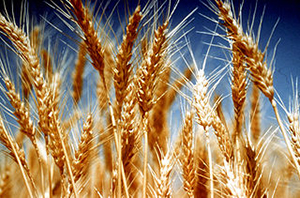
Modern humans have been increasingly concentrated in cities. The United Nations forecasts that 60% of the world’s population will live in urban areas by 2030. Regional multilateral institutions such as the Development Bank of Latin America and the Asian Development Bank have stepped up their efforts to support the urban sector and to collaborate on comparative studies of urbanization.
Urbanization is a broad term that includes a wide range of issues such as spatial distribution of cities, architectural design, labor migration, and size distribution of cities. In urban economics, the meaning of urban development is threefold: population urbanization, urban primacy, and urban concentration. For developing economies, population urbanization is often the starting point of discussion or research on urban development. However, against the rising importance of population urbanization, little has been published on the determinants of population urbanization in developing economies. One of the determinants is openness, particularly for Asia, where many economies adopt export-oriented policies with international trade playing an increasingly important role. Recognizing the shortage of research on the linkages between international trade and urban development in developing countries, we examine the effects of international trade on urban development, especially focusing on the interlinkages between international trade and population urbanization.
We construct a simple framework to show that grain imports and exports can affect population urbanization by changing the constraints of domestic grain surplus. In a closed economy, the share of the population that can live in urban areas is basically determined by the grain and food surplus produced by farmers because the urban sector can only be fed by the agriculture sector. However, in an open economy, the equilibrium could be changed by international trade.
Figure 1: Equilibrium between Grain Surplus and Urbanization in Open Economies

Figure 1 depicts the situation of an open economy. Suppose grains are only produced by the rural sector and industrial goods are produced by the urban sector. In this case, country B can import nonfarm products from country A after exporting food items. Cross-border trade enables country A to increase its population urbanization at the expense of country B’s urbanization potential. Meanwhile, nonfarm exports of country A will help sustain its urban sector and contain country B’s population urbanization. So, international trade between count A and B will change the equilibrium between rural and urban sectors in both countries—the share of urban population could be higher or lower than the rate of surplus grain produced by domestic farmers. If a country imports grain and exports industrial goods, it will need more urban workers and fewer agricultural workers, and consequently improve its level of urbanization. In contrast, exporting more grain and importing more industrial goods implies a lower level of urbanization.
We then employ developing country panel data from Asia to do some empirical testing and arrive at the following results: (i) The coefficients of trade openness are significant and negative in all models. After decomposing trade into trade of cereals and non-cereals, the coefficient of cereals trade is significant and positive whereas that of non-cereals trade is significant and negative. (ii) After controlling for the non-cereals trade, the coefficient of imported cereals is significant and positive. (iii) After controlling for the trade of non-cereals, net import of cereals is significantly positive. These results suggest that cereals and non-cereals trades have different effects on population urbanization and that net import of cereals increases the importer’s population urbanization. Then we also provide evidence from economic history, the People’s Republic of China, and India. This evidence also highlights the critical role of cereals trade in population urbanization in developing economies.
Goal 11 of the Sustainable Development Goals (SDGs) is to make cities inclusive, safe, resilient, and sustainable. Our research has important policy implications for the SDGs. Urbanization can be accompanied by unemployment and poverty, malnutrition, ghetto housing, and so on. For example, if the speed of population urbanization is too fast, but the agrarian sector cannot provide enough food to feed the population, malnutrition would appear. Our research suggests that agricultural development can loosen the grain constraint and promote population urbanization; therefore, investment in agriculture, including irrigation, soil improvement, and technology upgrades, can help promote population urbanization and economic growth. Technical assistance from developed countries on improving labor productivity or gross output of food in developing countries can also help to fulfill the goals of SDGs. And for small developing countries, or countries with limited agricultural endowments, importing grains is a possible way to promote sound and orderly population urbanization and sustainable economic growth.
_____
References:
Zhang, Y. and G. Wan. 2017. Exploring the Trade–Urbanization Nexus in Developing Economies: Evidence and Implications. ADBI Working Paper 636. Tokyo: Asian Development Bank Institute.
Photo: CSIRO [CC BY 3.0], via Wikimedia Commons




